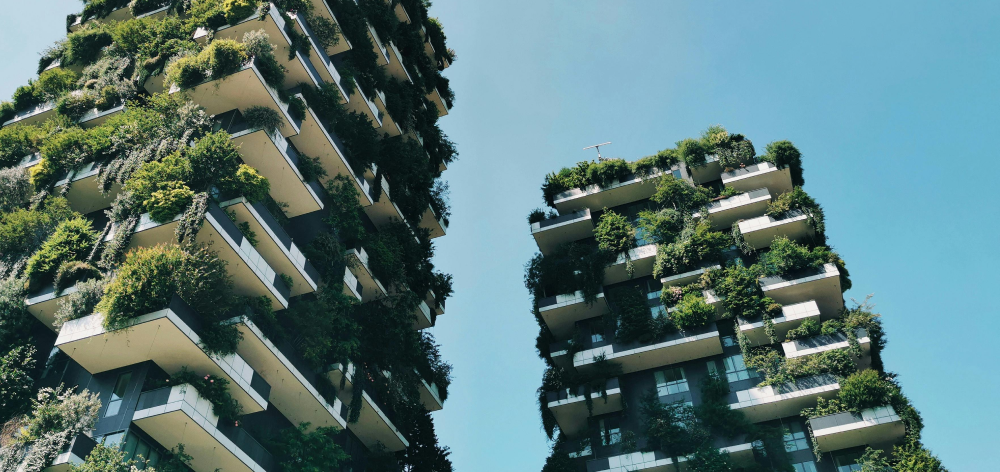The Psychology of Vertical Living: How Air Rights Shape Human Experience
July 23, 2025
< Back to Blog
As urban populations swell and available land grows scarce, cities are increasingly turning skyward, embracing vertical living as the primary way to expand. This shift doesn’t just reshape skylines; it transforms how people live, interact, and experience their environment. Central to this transformation is the concept of air rights, the legal ability to develop the space above a property, which has become a powerful driver of vertical urban growth.
Understanding Vertical Living in the Context of Air Rights
Air rights allow property owners to claim and build within the space above their land, turning what was once invisible air into a tangible and valuable asset. This legal framework has enabled the rise of towering skyscrapers and innovative rooftop uses that redefine urban real estate. But beyond these physical changes, air rights influence how residents perceive their homes and communities, bringing new psychological dimensions to living in vertical spaces.
The Psychological Impact of Height and Space
Living high above the ground affects individuals in subtle but meaningful ways. Floors higher up often carry a symbolic weight, suggesting status and success that can elevate a resident’s sense of identity. Nevertheless, this vertical status can also deepen social divides, physically and psychologically separating those living at different heights. While the views and privacy offered by elevated dwellings are attractive, they can sometimes lead to feelings of isolation. The natural, spontaneous interactions typical in street-level neighborhoods may be harder to come by, creating a unique challenge for fostering community.
Height also changes how people feel about safety and control. Elevated residences can offer refuge from the noise and unpredictability of the streets below, providing a comforting sense of protection. Yet, for some individuals, the very height that provides safety can also trigger anxiety or discomfort, such as vertigo. Access to natural light, greenery, and open vistas has been shown to improve mood and reduce stress in vertical environments, while cramped or poorly designed spaces can exacerbate feelings of confinement and unease.
Social Dynamics in Vertical Communities
Air rights do more than build structures; they help create new social landscapes. Vertical living gives rise to “communities in the sky” where neighbors share rooftop terraces, sky lounges, and other communal spaces. These shared environments offer opportunities to build social bonds and foster a sense of belonging, even as traditional street-level interactions diminish. As vertical communities grow, cultural norms evolve around privacy, noise, and neighborliness, redefining how urban social life functions in these layered settings.
Designing for Psychological Wellbeing in Vertical Developments
To cultivate healthy, thriving vertical communities, architects and planners must consider psychological needs as much as physical ones. Maximizing natural light and providing expansive views help residents stay connected to the outside world and feel less confined. Integrating green spaces such as rooftop gardens and terraces creates calming environments that support mental health. Designing communal areas encourages social interaction and builds community spirit. Additionally, ensuring that vertical environments are accessible and inclusive allows all residents to feel comfortable and connected, regardless of their mobility or lifestyle.
Real-World Example: The Bosco Verticale in Milan
A standout example of air rights shaping vertical living and psychological wellbeing is Milan’s Bosco Verticale (Vertical Forest). This pair of residential towers integrates more than 900 trees and thousands of plants across balconies and terraces, creating a living ecosystem in the sky. Residents benefit from cleaner air, natural shade, and a calming green environment that counteracts the stress and isolation often associated with high-rise living. The Bosco Verticale demonstrates how leveraging air rights to build upward doesn’t have to mean sacrificing connection to nature or community; instead, it can redefine urban living by blending nature, architecture, and human wellbeing.
The Future of Air Rights and Human Experience
As air rights become increasingly integral to urban planning and property ownership, SkyTrade is at the forefront of transforming how these rights are accessed and traded. By leveraging blockchain technology, SkyTrade converts air rights into transparent, secure digital assets, making it easier for individuals and organizations to invest in and manage vertical spaces. This innovation democratizes ownership, allowing more people to participate in shaping their urban environments.
SkyTrade bridges the gap between traditional real estate and decentralized finance, offering new tools to support thoughtful development that prioritizes human wellbeing. Through its pioneering work, SkyTrade helps ensure that vertical living is not only an economic opportunity but also a chance to build inclusive, connected communities that enrich the human experience above the city streets.




